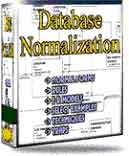 |
||
|
|
Project Time TrackingI Project Time Tracking - BackgroundWe are all optimists at heart. Our faith in our abilities to deliver projects on time and within budget is boundless. In order to impress our bosses, we forget to perfom Project Time Tracking; we tend to project the sunny-side of our personality; this often leads us to delude ourselves that “everything is going on schedule”. The result is that the project assumes the status of “behind-schedule” from day one. And then the first reports of slippage come in. Now we scurry around trying to find scapegoats; trying to first delude ourselves, and then the stakeholders; that despite the slippage, things are “still under control”. As a knee-jerk reaction, we might end up doing any of the several things that come to our panicked mind - fire that irritant programmer and replace her with some cool dude (never mind that he becomes a liability later), issue a command for everybody to sacrifice their weekends and holidays, or do some part of the work ourselves. And then the next round of Project Time Tracking reports, again on slippage, trickle in … with more knee-jerk reactions. The above scenario is not an exception. As industry survey results show, such scenarios are a norm. It is not under-estimation alone that is the root of all evil. Padding time estimates generously is not without its negative side-effects, either! Indeed, walking the tight-rope of a balanced time-estimation is what project managers have to do most of the time. II Estimating time accuratelyEstimating time accurately - okay, reasonably well - for every deliverable has two immediate benefits: one, your credibility in the eyes of the stakeholders increases; this has a long-term impact on your bonus, ESOPs and so on; and two, a more realistic commercial value on the project (if it is a customized requirement), or a more accurate cost-benefit analysis for the project (if it is an internal project) may be made. Pinpointing the time required more accurately, with a narrow error range, usually comes with experience in the trenches. Whatever may be said of fuddy-duddies, the one thing that seniors get to hone while working their way up the totem-pole of organization hierarchy is correct time-estimation. There is an uncanny nose for trouble and weak-spots in the system, which is simply translated into additional time blocks to resolve them at just the right point of time. The reason why seniors are more accurate in their time estimation is because they have a repository of historical information about past projects in their mind. This repository can be used as a thumb-rule most of the time for Project Time Tracking. Though estimating time is an art as well as an exact science, there are some basic events that one needs to factor into the calculations, and which are often overlooked:
Properly setting aside time slots to the aforementioned events at the right time goes a long way towards accurate project estimation. More often than not, some amount of correctness can be built into the project management process by mulling things deeply at the planning stage. Not only must one’s utmost faculties be applied to think through the sequence of activities (what activity is sequential, and what is concurrent), but also a drill-down of the major activities into what are known as “Work Breakdown Structure” or WBS, or individual components are necessary. Another aspect of Project Time Tracking is control. Every project has three sets of components - ones that are 100% under our control, others that are partially under our control, and yet others that are 0% in our control. If there is any input from a component that is 0% in our control, the entire chain of events hinges on this component delivering within x units of time. (If delivery time exceeds x units: rest assured that slippage will be there.) So, the project manager has to be on their tows to chase these components. III Project Time Tracking - End wordDue to increasing complexity of projects - what with multiple dimensions, collaborative scenarios, and the like - project management can be at times very challenging to even the best of managers. Without Project Time Tracking it can easily get out of control. Not only estimating the time upfront, but also continuous updating of one’s time schedules to reflect ground realities conveys a message of openness and honesty to the stakeholders. After all, the bonus and ESOPs are waiting down the line! Return to Software Project Management
|
Exclusive interviews with:
Free eBookSubscribe to my newsletter and get my ebook on Entity Relationship Modeling Principles as a free gift: What visitors say...
"I just stumbled accross your site looking for some normalization theory and I have to say it is fantastic.
Read more
Testimonials
I have been in the database field for 10+ years and I have never before come across such a useful site. Thank you for taking the time to put this site together." Mike, USA |
|
Theory & Practice DB Normalization Analysis Phase Database Keys DB Glossary Appl.Architecture Oracle DBA MySQL DBA SQL Server DBA Install Oracle Install SQL Server Proj.Management Oracle Constraint Programming Tips Database Normalization eBook: |
||
|
Copyright © www.databasedesign-resource.com /
All rights reserved. All information contained on this website is for informational purposes only. Disclaimer: www.databasedesign-resource.com does not warrant any company, product, service or any content contained herein. Return to top
The name Oracle is a trademark of Oracle Corporation. |
||